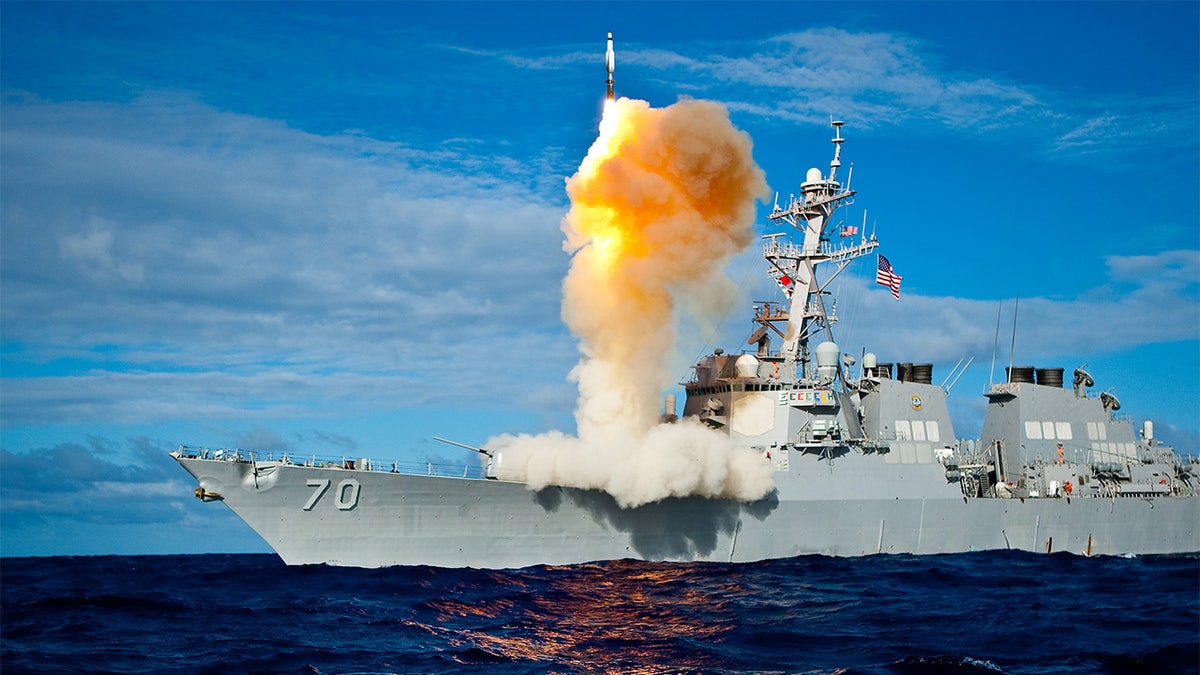
PACIFIC OCEAN (July 30, 2009) During exercise Stellar Avenger, the Aegis-class destroyer USS Hopper (DDG 70) launches a standard missile (SM) 3 Blk IA, successfully intercepting a sub-scale short range ballistic missile, launched from the Kauai Test Facility, Pacific Missile Range Facility (PMRF), Barking Sans, Kauai - file photo. (U.S. Navy photo/Released)
How would the U.S. Navy stop a massive, coordinated, multi-pronged weapons attack? Major power enemies might seek to overwhelm and destroy U.S. Navy surface ships by simultaneously launching a series of coordinated attacks -- firing surface-skimming anti-ship missiles, unleashing small boat attacks, conducting aerial drone missile strikes and launching land-fired ballistic missiles --- all at the same time.
Very serious concern about these kinds of scenarios, involving integrated enemy attacks, is inspiring the Navy’s current effort to fast-track new ship defenses and counterattack technologies. Much of this includes interceptor missiles, air-surface-undersea information sharing, close-in guns and even ship-fired lasers.
However, in order for Commanders to make decisions about which defenses are best suited for different kinds of attacks -- they first have to see a threat, and know it’s on the way. This is the reason why the Navy is quickly expanding applications for its emerging family of AN/SPY-6 radar systems. Not only will the longest range variant, the AN/SPY-6 (V)1, go on new Flight III DDG 51 destroyers, but the Navy is now networking its entire fleet with the systems with various kinds of SPY-6 radars ... amphibs, carriers, new frigates and more.
PENTAGON DEPLOYS NEW SUB-LAUNCHED, LOW-YIELD NUCLEAR MISSILE
The new radars are much more sensitive, much longer range, and engineered to discriminate threats from one another. The current SPY-6 integration initiative, now underway at a rapid pace, is changing Navy surface warfare tactics, according to the Navy’s Above Water Sensors Program Manager, Capt. Jason Hall.
Hall said multiple track functionality, signal processing and increased sensitivity provide “the heart” of how SPY-6 radars change tactics for ocean warfare.
We are looking at how you get after the increased capability that it (SPY-6 radar) brings, vs. the SPY-1 (current AN/SPY-1) legacy system. We have run the gamut as to what this radar can do,” Hall said in January at the Surface Navy Association Symposium, Arlington, Va.
Hall further explained that the SPY-6 radar systems, combined with fire control and an advanced software-ballistic missile defense system called Aegis Baseline 10, set the technical foundation for the fleet. “We will be leveraging this combat system as we look at frigate, amphibs and carriers,” Hall said.
NAVY ARMS SEA DRONES FOR OCEAN ATTACK
Multiple-track sensing and detection is expected to bring the desired radar detection strategy, as SPY-6 radars combine air-warfare and ballistic missile defense into a single system. When it comes to application, the SPY-6 radar systems streamline otherwise disparate fire-control and detection technologies; the SPY-6 can cue short-range, closer-in interceptors as well as longer-range ballistic missile interceptors such as an SM-3. This shortens sensor-to-shooter time and offers war commanders a longer window with which to make decisions about which countermeasure is needed. This integration is precisely the kind of defense needed to counter a multi-pronged, coordinated enemy attack potentially combining ballistic missiles with cruise missiles, drone attacks ... and other threats.
CLICK HERE TO GET THE FOX NEWS APP
The SPY-6 family moves beyond existing AN/SPY-1 ship-integrated radar system and, according to an interesting essay in “Microwave Journal,” “handles 30 times more targets and has 30-times greater sensitivity than the SPY-1D(V).” (“Radar and Phased Array Breakthroughs,” Eli Booker)
